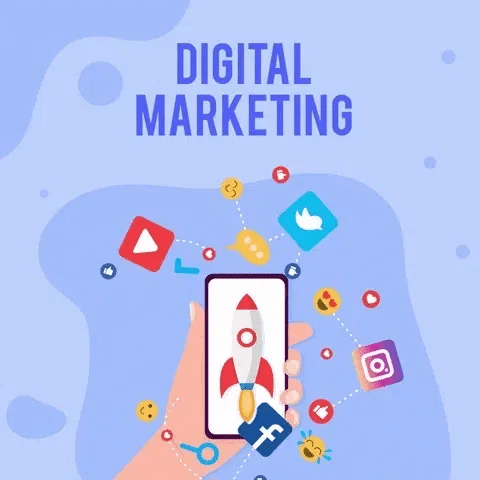As the digital era has grown, the marketing environment has changed, making digital marketing a crucial tool for any startup looking to succeed. The advantage lies in the ability of digital marketing to reach a global marketplace, fostering connections with customers who are already searching online for their products or services.
However, it is critical to remember that digital marketing is not merely about increasing visibility and driving traffic. It is also about engagement and conversion, creating a meaningful dialogue with consumers, and building long-term relationships based on trust and mutual benefit.
There are many different digital marketing strategies for startups to cost-effectively boost their growth and gain a competitive edge in the market. I will outline three.
1) The Power of (Intentional) Social Media Marketing
With an estimated 3.96 billion people using social media worldwide, social media is a powerful platform for startups and established companies. With the power to transform a brand’s visibility – for better or worse – a single post could completely change your growth trajectory overnight.
Develop a social media strategy as a part of your marketing strategy as soon as possible. Because of its quick-to-react nature and increasingly complicated algorithms, some people may put social media on the back burner in their marketing plan or merely rely on the “we’ll just post when we can” approach. However, these decisions will only have a detrimental effect eventually.
As a founder, begin by asking yourself a few straightforward questions:
- Do I have the time to actively manage our social media accounts under (yet another) hat, or can I delegate it?
- What social media sites should we post on, and how do they connect with our target audience?
- What content appeals to our target market and best promotes our goods or services?
Answering each of these questions will help you determine things like:
- If you, as the founder, are best suited to act as the brand’s spokesperson and post “in-the-moment” material, or if a small team can run it
- If you should be posting short-form video content on TikTok versus long-form thought leadership pieces on LinkedIn
- If you should be posting selfies of your team packing orders late at night or polished “talking head” style videos of you and your team
You and your team should constantly be considering how to be as intentional as possible.
Use social media to provide value, tell your narrative to the world, and set expectations for your team and yourself early on.
Every post offers the chance to engage authentically, regardless of style or platform.
2) Standing Out in Inboxes
We have all felt the pain of scrolling through our inboxes and seeing junk messages from email lists we do not remember subscribing to.
On the other hand, we’ve also probably impulse-bought something from a promotional email while scrolling late at night.
Positioning your brand as a positive part of your target audience’s inbox is a delicate balance. Email marketing remains an effective strategy for direct communication with a median ROI of 122% — over four times higher than other marketing formats, including social media, direct mail, and paid search.
We have all experienced the agony of scrolling through our inboxes and finding spam from email lists we do not recall signing up for.
On the other hand, we have all scrolled late at night and made an impulsive purchase from a promotional email.
With a median ROI of 122%, email marketing is still a successful tactic for direct communication. Email is also more than four times more likely than other marketing formats like social media, direct mail, and sponsored search.
This does not mean that sending an email will automatically result in a positive ROI.
Take the time to identify your target market and map out their inbox experience as your email list expands.
Personalized marketing is more crucial than ever, with 73% of consumers expecting brands to understand their unique needs and expectations.
There are many chances to create a unique experience for each customer, even if you only sell one product or service. Tailoring your messaging through personalization tokens to include customer names, generating a unique call-to-action (CTA) or coupon code based on the platform they signed up on your email list for, or curating a list of product or service recommendations unique to each customer is just one of many examples where personalization can shine.
This also means implementing a proper system to track meaningful data points such as open rates, click-through rates, and conversions to understand your audience best. Unlocking these data points will help you establish a more meaningful connection with your audience to avoid becoming “just another email” in the trash.
3) Content Marketing with a Value-First Mentality
The most effective content marketers give without expectation.
Content marketing is a marketing technique that uses informative, advisory, and entertaining content to attract and engage a target audience and to convince them of the value of a company, its products, or its brand. It costs 62% less than traditional marketing and, if done correctly, can generate more sales without asking for the sale formally.
Understanding that your audience is not just a potential sale or conversion but a community seeking value is a more paced strategy that pays dividends eventually.
Providing valuable, free content cultivates trust, loyalty, and a sense of reciprocity among the audience.
This can take on a variety of shapes, including blogs that address frequently asked customer issues, instructional video series, podcasts based on market insights, etc. These pieces of content not only function well as niche marketing materials but also have the potential to remain evergreen and position you as an authority over time, all without a traditional sales pitch.
This trust-based relationship increases brand loyalty, positive word-of-mouth, and higher conversion rates.
SEO, or search engine optimization, heavily relies on content marketing. You can boost the visibility of your website by writing and posting high-quality content that contains the appropriate keywords for your business. Search engines elevate websites that consistently post pertinent, keyword-optimized material in search results, making it more likely that potential customers will find you when looking for the goods or services you provide.
When used wisely, digital marketing can accelerate startup growth without requiring a significant investment. Understanding your audience, the platforms they use, and the kinds of content they consume can help your business reach new potential heights while making the most of even modest investments.
This article first appeared on HACKERNOON





